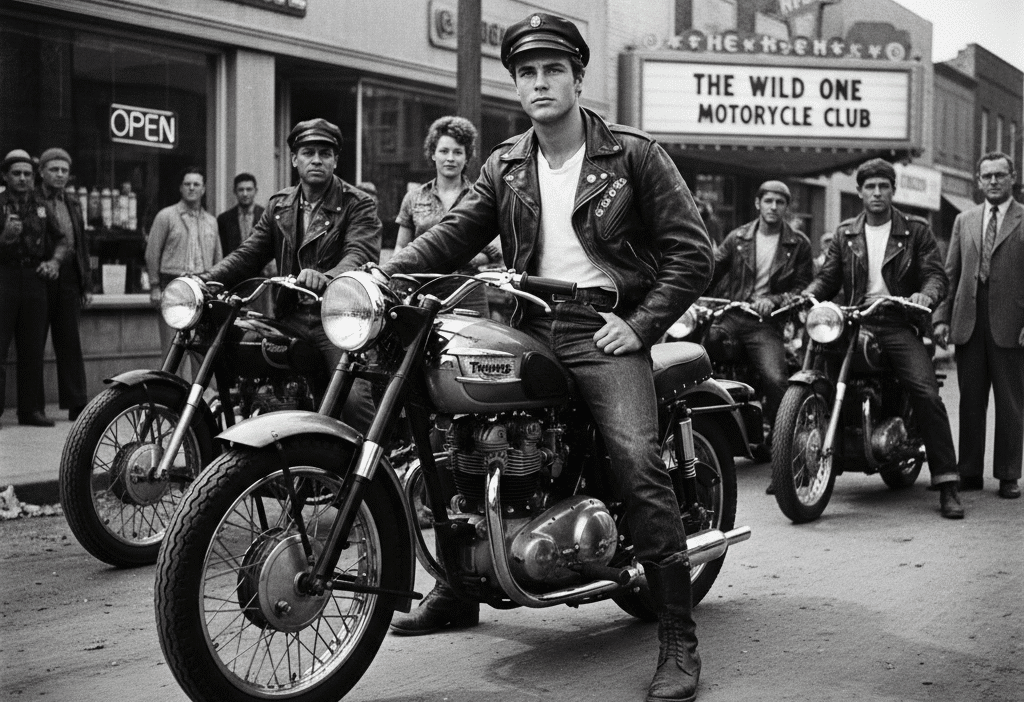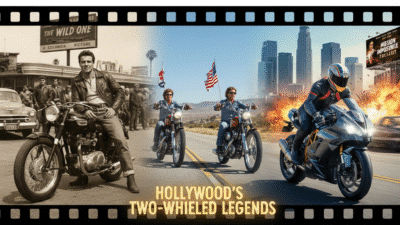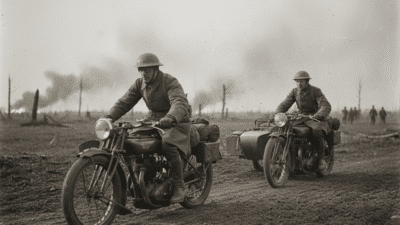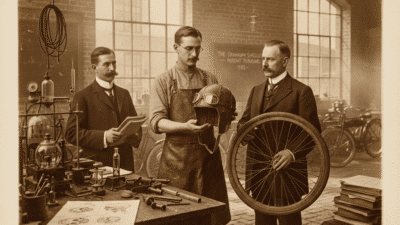Feel the rumble beneath you, the wind a roaring symphony in your ears, the open road stretching endlessly ahead. There’s an undeniable, visceral thrill that comes with straddling a motorcycle, a sensation deeply etched into the human psyche. More than just a mode of transport, motorcycles have roared into history as indelible symbols of freedom and rebellion, captivating hearts and minds for over a century. They represent an escape from the mundane, a defiant stand against conformity, and an unwavering commitment to forging your own path. This isn’t just about speed; it’s about spirit, about the journey, and the profound connection between rider, machine, and the vast, unwritten adventure that lies ahead.
The Genesis of a Legend: From Utility to Icon
The story of the motorcycle begins not with rebellion, but with practicality. In the late 19th and early 20th centuries, as engineers tinkered with internal combustion engines, the first motorized bicycles emerged. These weren’t the sleek, powerful machines we know today, but rather ingenious contraptions designed to make personal travel more accessible and efficient. Early models, like the Daimler Reitwagen in 1885, were rudimentary, yet they laid the groundwork for a revolution. Initially, motorcycles served as an affordable, nimble alternative to the nascent automobile, offering individual mobility to the masses. They were tools for doctors, delivery riders, and adventurers, pushing the boundaries of what personal transport could achieve.
However, even in these early days, a seed of something more profound was planted. The sheer act of riding, exposed to the elements, engaging directly with the road, offered a novel sense of liberation. It was a stark contrast to the enclosed, often stately experience of early cars, which themselves were a marvel of engineering, as detailed in articles like the birth of the automobile. As the technology advanced, so too did the capabilities of these two-wheeled wonders, moving beyond mere utility to hint at the potent cultural force they would become.

Post-War Roar: The Birth of the Biker Image
The true explosion of the motorcycle as a symbol of rebellion came in the aftermath of World War II. Thousands of servicemen returned home, accustomed to the adrenaline of combat and the camaraderie of their units. Many found themselves struggling to reintegrate into a seemingly bland, conformist society. They craved excitement, purpose, and a sense of belonging that mainstream life often couldn’t provide.
For many of these veterans, surplus military motorcycles, or powerful new models from manufacturers like Harley-Davidson and Indian, became the answer. These machines offered speed, noise, and an instant community. Small groups of ex-servicemen began forming motorcycle clubs, riding together, and seeking thrills on the open road. These weren’t initially criminal enterprises, but rather tight-knit groups bound by a shared love for riding and a quiet defiance of societal expectations.
The Hollister Incident and Media Frenzy
Then came the infamous “Hollister Riot” of July 1947. During an American Motorcyclist Association (AMA) rally in Hollister, California, a chaotic scene unfolded. While accounts vary, sensationalist media portrayals of drunken, unruly bikers taking over the town quickly spread like wildfire. Life magazine published an iconic photo of a disheveled man on a motorcycle, surrounded by beer bottles, solidifying a menacing image in the public consciousness.
The AMA, eager to distance itself from this negative perception, famously stated that “99% of motorcyclists are law-abiding citizens.” This declaration inadvertently created the “1%er” culture – a defiant embrace by a small percentage of riders who chose to live outside societal norms, identifying as the outlaws. This was the moment the “biker” image, synonymous with leather, rebellion, and a devil-may-care attitude, was truly born.
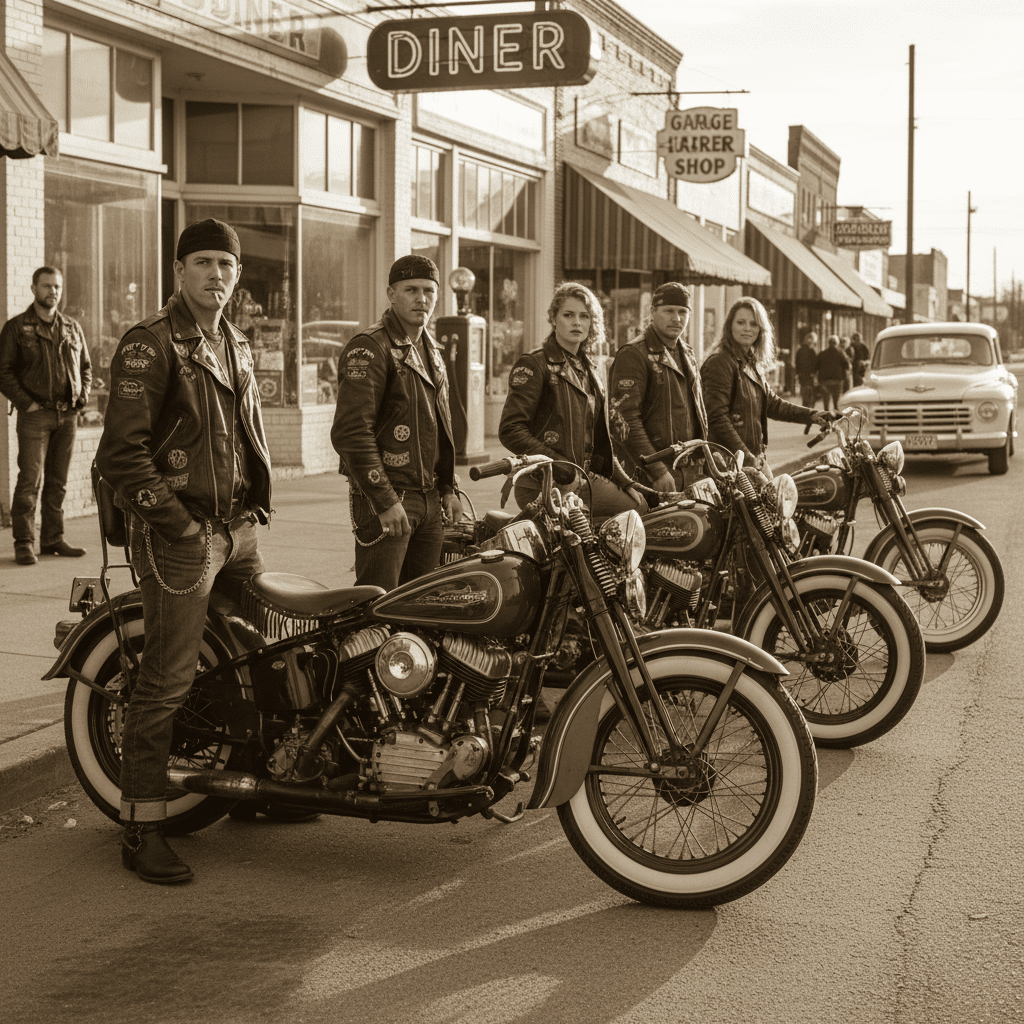
Hollywood’s High-Octane Influence
If the post-war era forged the image of the motorcycle rebel, Hollywood cemented it into legend. The silver screen amplified the myth, transforming riders into anti-heroes who captivated audiences worldwide.
The Wild One (1953)
Marlon Brando’s portrayal of Johnny Strabler in The Wild One was arguably the most pivotal moment. Brando, clad in a black leather jacket, astride his Triumph Thunderbird, embodied the brooding, misunderstood outsider. His iconic line, when asked what he’s rebelling against, “Whaddaya got?”, became the anthem for a generation. The film depicted the clash between a small town and a motorcycle gang, painting a picture of societal fear and the allure of youthful defiance. It wasn’t just a movie; it was a cultural phenomenon that defined the archetype of the motorcycle rebel for decades.
Easy Rider (1969)
Later, Easy Rider took the rebellion to new heights, perfectly capturing the spirit of the 1960s counterculture. Peter Fonda and Dennis Hopper, as Wyatt and Billy, journey across the American Southwest on their customized choppers, seeking freedom, enlightenment, and a way out of the establishment. The film’s stunning visuals, rock soundtrack, and poignant themes of personal liberty and the loss of innocence resonated deeply. It wasn’t just about motorcycles; it was about the American dream, the open road, and the yearning for unbridled freedom in a rapidly changing world. The image of their choppers cruising against the backdrop of vast landscapes became synonymous with ultimate liberation.
These films didn’t just reflect culture; they shaped it, inspiring countless individuals to buy a bike, hit the road, and embrace their own version of freedom. They understood the magnetic pull of the bike, a machine that promised escape and self-discovery.
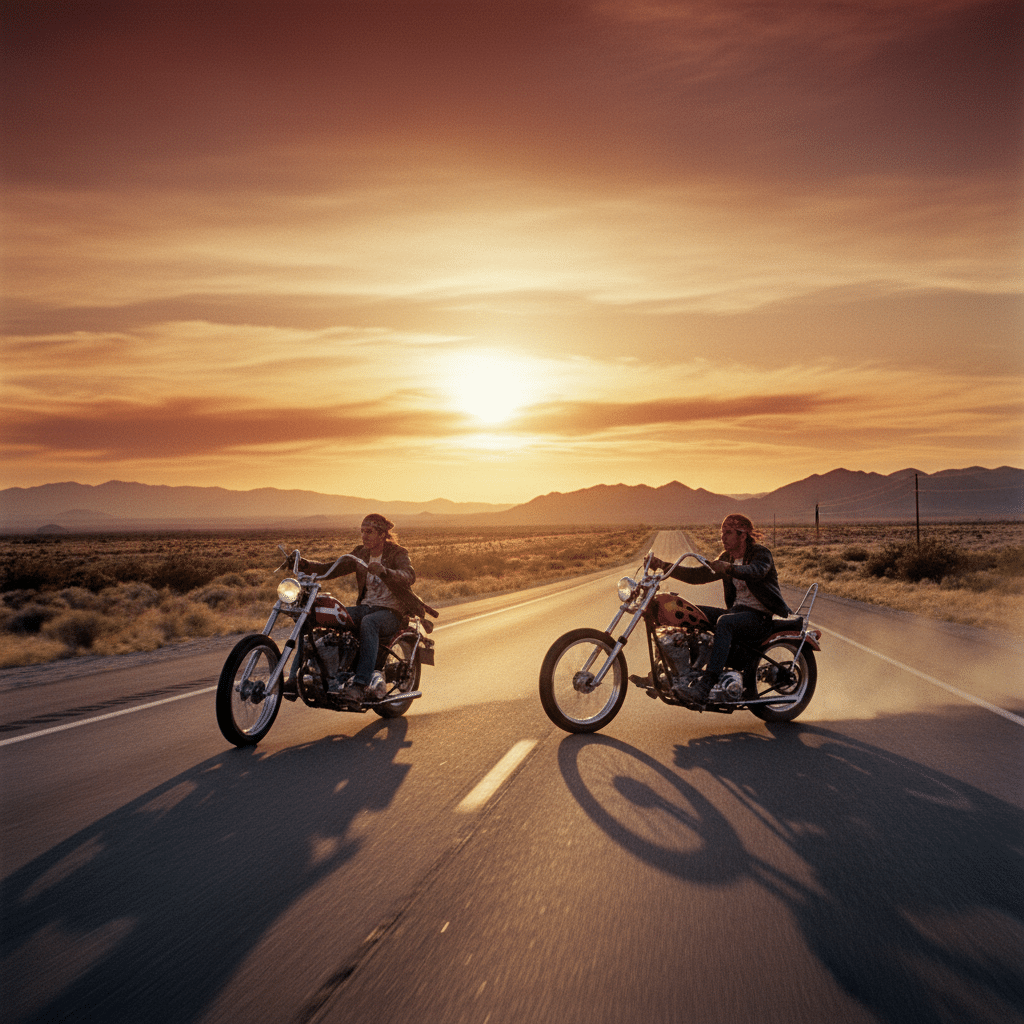
Customization and Community: The Personal Expression
Beyond the rebellious image, motorcycles offered an unparalleled platform for personal expression. Riders weren’t just buying a vehicle; they were crafting an extension of their identity.
The Art of Customization
The post-war era saw a boom in motorcycle customization. Riders began modifying their machines to reflect their individuality and riding style:
- Choppers: Defined by their extended front forks, often raked out, and stripped-down aesthetics, choppers were a radical departure from factory designs. They prioritized form over some aspects of function, becoming rolling works of art.
- Bobbers: Early customization involved “bobbing” or cutting down fenders and removing non-essential parts to lighten the bike and give it a sleeker, more aggressive look.
- Café Racers: Emerging from 1950s British youth culture, these bikes were designed for speed and handling, stripped down for quick dashes between cafes. Low handlebars, rear-set footpegs, and single seats were common.
This culture of modification underscored the idea that a motorcycle was not just a product, but a canvas. Every custom paint job, every chrome accent, every engine tweak was a declaration of personal style and a rejection of mass-produced uniformity. This hands-on approach also fostered a deep understanding of the machine, making essential maintenance skills, like how to check and replace the brake pads on your motorcycle or having basic motorcycle tool kit essentials, part of the riding experience.
The Brotherhood and Sisterhood of the Road
While often associated with individualism, motorcycling also fostered strong communities. From outlaw clubs to enthusiast groups and touring associations, riders found kinship on two wheels. These communities provided a sense of belonging, shared adventure, and mutual support. Rallies, meet-ups, and charity rides became significant social events, reinforcing the bond among riders. This camaraderie, whether among a small group of friends or thousands at a major event, further solidified the motorcycle’s role as a symbol of shared identity and freedom.

Modern Motorcycling: Redefining Freedom for a New Era
Fast forward to today, and the motorcycle’s symbolic power remains as potent as ever, though its expression has diversified. While the rebel image still holds a certain allure, modern motorcycling encompasses a vast spectrum of riders and lifestyles.
Diverse Expressions of Freedom
Today’s motorcycle market offers an incredible array of machines, each catering to a different facet of freedom:
- Adventure Bikes: For those seeking the ultimate escape, tackling continents and challenging terrains. These riders embody exploration and self-reliance.
- Sportbikes: For the thrill-seekers, pushing the limits of speed and agility on tracks or winding roads. They represent precision, skill, and an exhilarating connection to performance. The passion for speed is evident in events like the Isle of Man TT, where riders push limits in pursuit of glory.
- Cruisers: Continuing the tradition of American V-twins, these bikes are for relaxed, long-distance touring, embodying a laid-back, open-road lifestyle.
- Naked Bikes & Standards: Versatile and agile, perfect for urban commuting and weekend jaunts, offering practical freedom and stylish simplicity.
- Electric Motorcycles: A new frontier, promising silent, emission-free rides while still delivering impressive performance, pushing the boundaries of what a “rebel” ride can be in an eco-conscious world.
The Balance of Individuality and Community
Modern riders still cherish individuality, often customizing their bikes to reflect their personality. However, there’s also a powerful emphasis on community. Online forums, social media groups, and organized rides connect riders globally. This evolution shows that freedom isn’t just about defiance; it’s about defining your own terms, whether that means embarking on a solo cross-country trip or sharing the road with a caravan of like-minded adventurers. Understanding your machine, often starting with simply understanding your motorcycle owner’s manual, remains a key part of this connection to the road and machine.
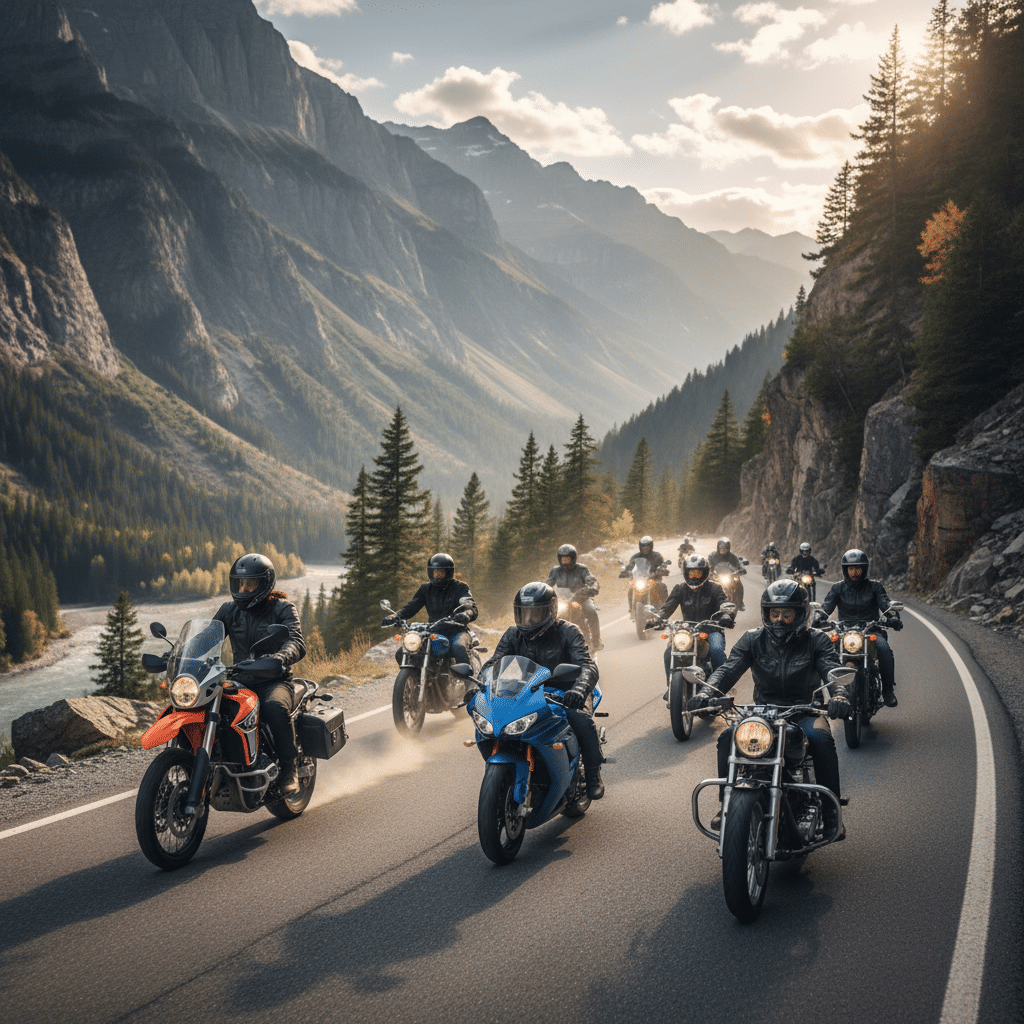
The Enduring Allure: Why We Continue to Ride
So, what is it about these magnificent machines that continues to captivate us? Why do millions worldwide choose two wheels over four, embracing the wind, the noise, and the vulnerability of the open road?
A Sensory Masterpiece
Riding a motorcycle is an intensely sensory experience. You are immersed in the environment, not shielded from it. The smell of pine forests, the warmth of the sun, the bite of a cold morning air, the roar of the engine, the subtle vibrations through the handlebars – every sensation is heightened. It’s an antidote to the sterile, disconnected feeling of modern life. It forces you into the present moment, a mindful dance between human and machine.
The Ultimate Escape
For many, a motorcycle is a gateway to escape. It’s a break from the cubicle, the traffic jam, the endless responsibilities. When you put on your helmet, the worries of the world often melt away. The focus required for riding, the constant assessment of the road and surroundings, demands your full attention, leaving little room for daily stresses. It’s a moving meditation, a therapeutic journey.
Camaraderie and Belonging
Despite the perception of the lone wolf, motorcycling fosters deep bonds. Sharing a passion for riding creates an instant connection, whether you’re waving to a fellow rider on a highway or embarking on a multi-day trip with friends. The stories shared over coffee, the mechanical advice exchanged, the common challenges overcome – these build a powerful sense of community and shared identity.
Mastery and Self-Reliance
Riding a motorcycle requires skill, focus, and continuous learning. Mastering cornering techniques, understanding your machine’s limits, and navigating diverse road conditions builds confidence and a sense of accomplishment. There’s an inherent self-reliance in motorcycling; it’s just you and the machine, relying on your own judgment and abilities.

Pros and Cons
| Pros | Cons |
|---|---|
| – Unparalleled sense of freedom and exhilaration | – Higher risk of injury in accidents |
| – Strong community and camaraderie among riders | – Vulnerability to weather conditions |
| – Cost-effective for commuting and fuel efficiency | – Extensive maintenance requirements |
| – Easy to customize for personal expression | – Public perception can be negative |
| – Better maneuverability in traffic and parking | – Less storage capacity than cars |
The Future of Two Wheels: A Continuing Legacy
As we look ahead, the motorcycle’s journey is far from over. Technology continues to evolve, bringing electric powertrains, advanced safety features, and smart connectivity to the fore. Yet, the core essence of the ride – the personal connection, the freedom, the spirit of rebellion – will undoubtedly endure.
Electric motorcycles, like those from pioneers such as Zero and Harley-Davidson’s LiveWire, offer a new kind of quiet, powerful freedom. They challenge traditional notions of what a motorcycle should sound and feel like, opening the door to new urban and eco-conscious riders. Autonomous technology, while largely focused on cars, will spark debates about the very definition of riding, reinforcing the human-centric appeal of motorcycles. The future promises a blend of innovation and tradition, ensuring that the roar, or perhaps the silent hum, of freedom will continue to echo on our roads.
The motorcycle remains a powerful symbol. It’s a testament to humanity’s desire for adventure, individuality, and the unyielding spirit of challenging the status quo. From early tinkerers to modern adventurers, the call of the open road, the thrill of the ride, and the profound sense of self-expression continue to define the motorcycle as one of history’s most enduring icons of freedom and rebellion.
Conclusion
From its humble beginnings as a practical means of transport to its undeniable status as a cultural icon, the motorcycle has woven itself into the fabric of our collective imagination. It’s a machine that doesn’t just move you from point A to point B; it transports you to a state of mind, a place where the rules of conformity fade into the rearview mirror. The rebellious spirit of the post-war era, immortalized by Hollywood and embraced by counterculture movements, has evolved, but the core message remains: a motorcycle is a declaration of independence, a ticket to adventure, and a personal statement against the ordinary.
Whether you’re a seasoned rider chasing horizons or an aspiring enthusiast dreaming of your first throttle twist, the allure of the motorcycle is timeless. It’s a reminder to break free, explore, and find your own open road. So, what are you waiting for? Unleash your inner rebel, embrace the freedom, and let the journey begin!
Frequently Asked Questions
What made motorcycles symbols of rebellion after WWII?
Returning veterans, seeking adrenaline and camaraderie, found motorcycles offered an escape from post-war conformity. The sensationalized “Hollister Riot” of 1947, followed by media portrayals, solidified the image of the defiant, leather-clad biker.
How did Hollywood contribute to the motorcycle’s rebellious image?
Films like The Wild One (1953) starring Marlon Brando, and Easy Rider (1969) iconicized the motorcycle as a symbol of anti-establishment defiance, personal freedom, and counterculture, deeply influencing public perception and inspiring generations of riders.
What is the “1%er” culture in motorcycling?
The term “1%er” emerged after the American Motorcyclist Association (AMA) stated that “99% of motorcyclists are law-abiding citizens.” A small fraction of riders, primarily members of outlaw motorcycle clubs, defiantly embraced the “1%” label, identifying as outsiders living by their own rules.
How has motorcycle customization played a role in its symbolism?
Customization, through styles like choppers, bobbers, and café racers, allowed riders to personalize their machines, transforming them into unique expressions of individuality. This practice emphasized self-reliance and a rejection of mass-produced uniformity, further cementing the motorcycle’s role as a symbol of personal freedom.
What are the main reasons people ride motorcycles today?
Modern riders are drawn to motorcycles for an unparalleled sense of freedom, the intense sensory experience of the ride, the strong camaraderie within riding communities, the thrill of mastering a skill, and the meditative escape it offers from daily stresses.
Are electric motorcycles changing the perception of freedom and rebellion?
Yes, electric motorcycles are ushering in a new era of freedom – quiet, sustainable, and powerful. They challenge traditional notions of the motorcycling experience and appeal to a new generation of riders who value eco-consciousness alongside performance and individuality.
